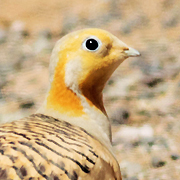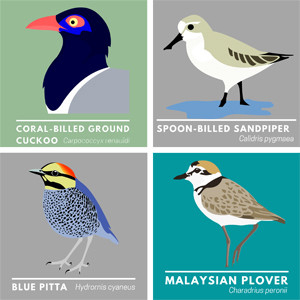
Woodpeckers are one of my favourite groups of birds so I was very happy to see six species of them on the 2019 winter tour of South Korea in January, particularly as two of them were among my favourites; the friendly Japanese Pygmy Woodpecker and the impressive Black Woodpecker.
Japanese Pygmy Woodpecker is widespread and quite numerous throughout the Korean peninsula, not endemic to Japan as the name might suggest, and is always a highlight of trips to South Korea for me. We also enjoyed excellent views of White-backed Woodpecker, Grey-faced Woodpecker, Grey-capped Pygmy Woodpecker and Great Spotted Woodpecker as well as two prolonged flight views of Black Woodpecker. I am already looking forward to the next winter tour next year.
Details of the next trip can be seen here - South Korea Winter Birding Tour.
Japanese Pygmy Woodpecker is common in Korea in woodland and even in farmland with hedgerows, copses and gardens. As a species with a highly restricted global range it is a good one to see but the real appeal of this bird for me is the fact that it will so often just turn up right next to you and do its thing oblivious to your presence.The National Arboretum is a good place to see this species along with many others including Varied Tit, Marsh Tit, Hawfinch and Solitary Snipe.
In Korea they don’t like calling anything “Japanese” so the name here is simply “Pygmy Woodpecker” which is a name I am seeing used on some international checklists too and to some degree reflects the fact that it can be seen in Japan, South Korea, North Korea and parts of China. I have seen it in lots of places in South Korea and it is usually very obliging for the photographers in the group.
Great Spotted Woodpecker is a species many birders are familiar with from Europe. The subspecies japonicus is found in Korea and it is easily seen in parks, gardens and even traffic islands with trees on in central Seoul and, of course, in more substantial woodlands. Nobody goes to Korea specifically to see this species but it is a nice bird to add to the list.
White-backed Woodpecker is superficially very similar to Great Spotted but it is noticeably bigger with a more powerful bill and the streaked breast and belly makes identification easy if it can be seen. Quick reference to the Birds of East Asia field guide will clarify any id problems birders might have with these birds. On the 2017 tour we were lucky enough to watch this bird at eye level, only a few metres away as it hacked away at a stump in the snow. On the 2019 tour we had another nice encounter with one in a patch of woodland in a park in Gunsan, allowing everyone to watch it for a long period of time, always a nice bird to see.
While we observed the White-backed Woodpecker in January 2019 it was difficult to know where our attention should be as a nice Grey-faced Woodpecker was performing well nearby. This is another bird with a wide world range although the exact taxonomy is under question with birds in Sumatra usually split as Sumatran Woodpecker and birds in the rest of Southeast Asia often split as Black-naped Woodpecker. However, the jessoensis subspecies in Korea would remain within Grey-faced Woodpecker, split or no split. It is fairly widespread and a bird we always see on trips to Korea in winter.
The bird above gave us a very long period of time to get close and take some nice photos in the park in Gunsan in January 2019 but we also often see it in the fringing trees of Junam Reservoir.
Grey-capped Pygmy Woodpecker is widespread in East Asia but it is very scarce in Korea. Through its range the subspecies vary considerably and the doerriesi subspecies in Korea varies quite a lot from the subspecies I often see in Southeast Asia not only in plumage but in size. Surely this cannot be the same species? I am always interested to see this bird and think that if further study were put into this species it is likely to be a potential split. It is rare in South Korea but I have seen it in central Seoul, the National Arboretum and Seoraksan National Park.
Black Woodpecker is a very spectacular bird and I was very pleased to see my first one in Asia at the National Arboretum in January 2019 as it flew across the valley over the car park giving us a nice prolonged view of its lazy flight. As we were leaving it repeated this act but I was unable to get any photos. In previous years we have heard this bird at the same location but this was the first time we have seen it.
Visiting South Korea in winter is always about Steller’s Sea Eagle, Scaly-sided Merganser, Relict Gull, Oriental Stork, Red-crowned Crane, Saunders’s Gull, White-naped Crane, Hooded Crane, Baikal Teal and many others but the woodpeckers are just another set of birds to enjoy and some that get me quite excited.
If you would like to join me on the next tour you can see the itinerary and details here - South Korea Winter Birding Tour.


 May 9th, 2019
May 9th, 2019  Nick
Nick 






 Posted in
Posted in  Tags:
Tags: 











